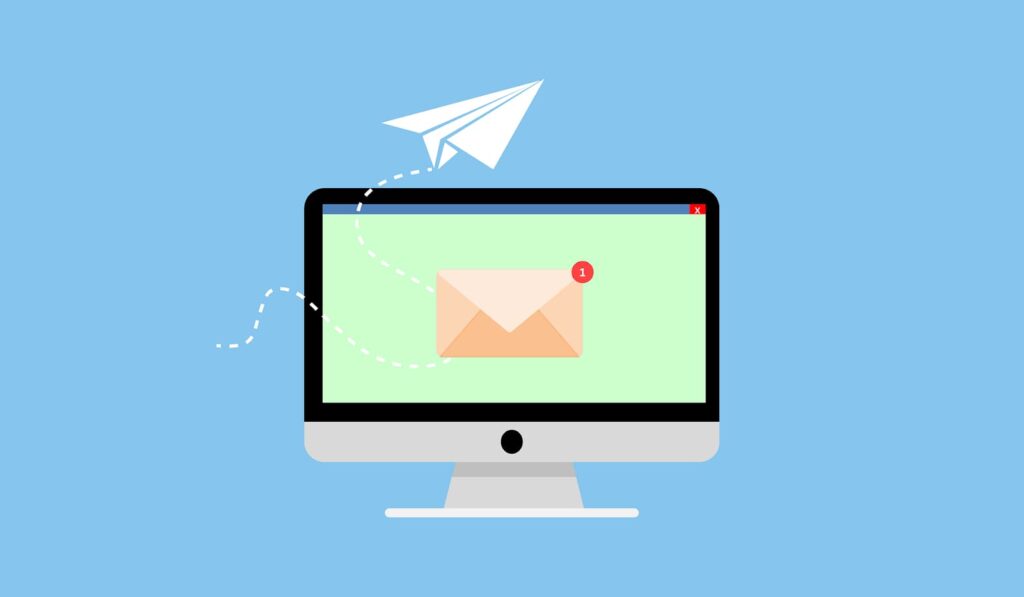There’s a wide variety of digital marketing strategies available, but one of the most time-tested and effective among them is email marketing.
The first promotional email was dispatched to several hundred consumers in the late ’70s, resulting in millions in sales for the vendor and birthing a completely new industry — digital marketing. Several decades later, emails continue to be one of the most potent tools for brand visibility and customer acquisition.
To succeed, email marketers must craft a robust marketing strategy. This involves identifying the target audience, setting clear goals, choosing the right campaign type, analyzing outcomes, and other crucial factors.
Equally important is the selection of a suitable email marketing service to deliver promotional messages. If you choose an inadequate software with limited capabilities, even a well-crafted marketing campaign can fail, leading to severe repercussions for your business.
Here are 8 essential features to look for in an email marketing service.
The Main 8 Features to Consider When Selecting an Email Marketing Service for Your Business Promotion
#1: Effective Contact List Management
The ability to manage a contact list is a fundamental feature of any email service. It’s pointless to expend resources reaching out to non-existent email addresses or those that consistently return messages for unknown reasons. These categories are known as hard bounces and soft bounces respectively.
A competent email service provider (ESP) should maintain a clean contact list, promptly deleting detected hard bounces. Soft bounces are given more leeway as the issue could be as simple as a full inbox.
The software should also allow users to customize their lists to automatically reflect recent changes, such as opt-outs.
Example
MailChimp offers an efficient list management system. If a soft bounce reoccurs, another attempt is made three days later. If the issue persists over several campaigns, the contact is classified as a hard bounce and promptly removed from the system.
#2: Accurate List Segmentation
Like the divide-and-conquer algorithm in programming, segmenting customers into distinct groups and targeting them with specific promotional materials helps email marketers achieve their objectives.
A reliable ESP should allow users to segment customers based on various criteria that can be combined in endless ways. Some distinguishing traits among contacts could include:
- Purchasing habits
- Gender
- Devices or browsers used by recipients
- Click-through rates
- Location of recipient
- Email client Industry
Examples
Several email marketing services, including HubSpot, Campaign Monitor, and MailChimp, offer excellent list segmentation features.
#3: Seamless Integration With Third-Party Software
The power of email marketing services lies in their ability to integrate with other software, particularly e-commerce platforms like Magento or WooCommerce. Any respectable ESP should provide users with the tools to merge its features with those of other software through extensions or APIs.
Examples
SendGrid offers connections to over 1,500 apps, including Facebook, Google Sheets, and BigCommerce.
HubSpot also provides a comprehensive list of integrations in categories like Advertising (Facebook Ads, Google Ads, RightMessage), Customer Success (Zendesk, LiveChat, Aircall), Sales (Shopify, PandaDoc, Typeform), Lead Generation (Zapier, WordPress, Instapage), and many more.
#4: Optimized A/B Testing
A/B testing, also known as split testing, is an invaluable marketing approach that helps determine the most effective subject line, content, or design for a specific set of recipients. It involves creating two versions of an email and sending each to a roughly equal subset of your contacts. By analyzing responses, you can identify the more successful version.
Example
Marketo, an email marketing platform, offers superior A/B testing options. Users can test various subject lines, email sending schedules, and even the “from” line. They can also compare the performance of different message versions.
For instance, with date/time tests, you can segment your contact list so that recipients in different time zones receive your emails at optimal times. This increases the likelihood of them opening and engaging with your message.
#5: Comprehensive Analytics and Reporting
In the realm of email marketing, data reigns supreme. Operating without knowing the effectiveness of your campaign equates to stumbling in the dark. Therefore, a competent ESP should offer comprehensive analytics and reporting tools. This includes a clear, informative dashboard displaying vital metrics such as:
- Devices used by recipients to open emails
- Actions taken on emails (deleting, forwarding, etc.)
- Time spent reading emails
- Parts of emails clicked on
- Gender engagement levels
With this data, you can refine your email marketing strategy for improved outcomes.
Example
MailChimp excels in the area of reporting and analytics among ESPs.
#6: Assured Deliverability

An email marketing strategy, segmentation, and captivating designs created by the best email development company are useless if your emails end up in junk folders.
A proficient ESP should guarantee that users’ messages consistently land in the recipients’ inboxes. One method to achieve this is by offering a dedicated IP address, particularly crucial for businesses sending large volumes of emails (e.g., 100,000 per week or more).
A dedicated IP address ensures a higher deliverability rate. Also, look for an ESP that offers tools to identify and report potential deliverability issues.
Example
For deliverability, we recommend SendGrid. They have a team of experts dedicated to resolving any deliverability challenges customers may encounter.
#7: Adaptable Autoresponders
Autoresponders are an excellent tool for nurturing leads, converting them into customers, and ensuring their loyalty. Instead of manually sending a “thank you” message to every newsletter subscriber, for instance, you can set up an autoresponder to do it – a time and money-saving feature.
A competent ESP offers adaptable autoresponders for various stages of the customer journey. Whether a download button is clicked, a new customer signs up on your site, or a purchase is made, an email is sent.
The best part? It all happens automatically without your intervention. You just need to set up the system once considering all possible scenarios.
Example
Campaign Monitor offers excellent autoresponders that handle most of the work for users. As stated on their official website: “Basically, you set the rules around when an autoresponder should be triggered and tell us what emails to send. We’ll do the rest.”
#8: User-Friendly Content Editor
The design of a promotional email is critical for lead acquisition and customer retention. Nothing tarnishes a brand’s reputation more than a poorly structured or badly designed message. Therefore, a capable ESP should offer an efficient and easy-to-use tool for building emails that include:
- Integration of user’s own HTML or CSS forms into an email
- A variety of ready-made templates
- Image-editing tool
- Responsive design
- Drag-and-drop functionality Users should also be able to save previous designs for future modification and use.
Example
MailChimp offers a functional and intuitive template editor. You can effortlessly drag-and-drop essential elements (images, buttons, etc.) into emails and position them as desired. You can also modify colors, borders, fonts, and perform other key design operations. Just follow the guidelines.
Summary
Choosing the right email service provider (ESP) involves a careful evaluation of key features such as segmentation capabilities, integration, A/B testing options, analytics and reporting, deliverability, autoresponders, and a user-friendly content editor.
These features allow for a tailored and effective email marketing strategy, providing a clear path for user engagement and conversion. Providers like SendGrid, HubSpot, Marketo, MailChimp, and Campaign Monitor offer various combinations of these features, enabling businesses to select the ESP that best aligns with their specific needs and objectives.
Ultimately, the right ESP can make a tremendous difference in email marketing outcomes.










More Stories
Top 13 Benefits of Implementing FHIR in Healthcare Systems
10 Common Challenges in FHIR Implementation
Tips for Starting a Software Development Company